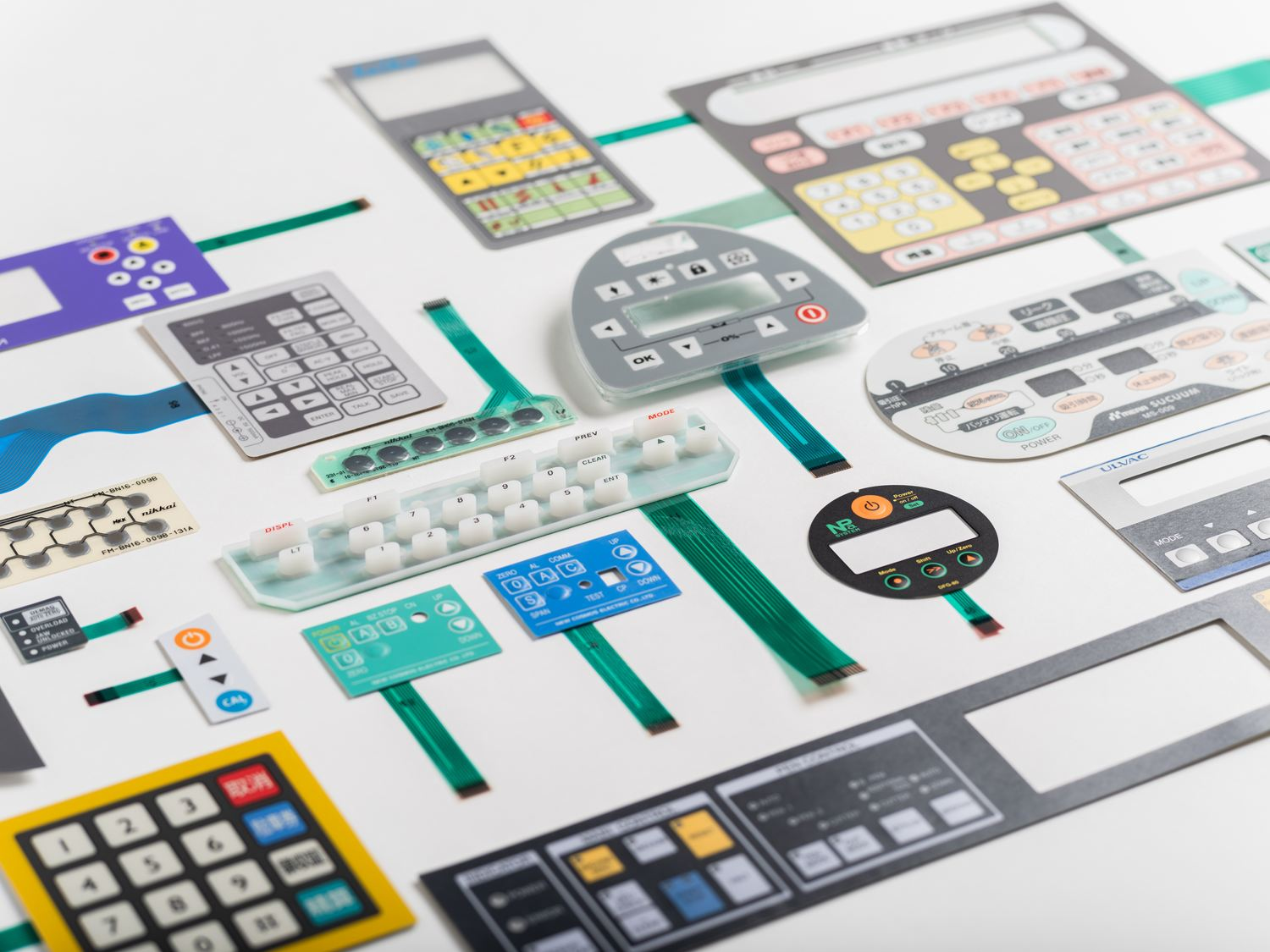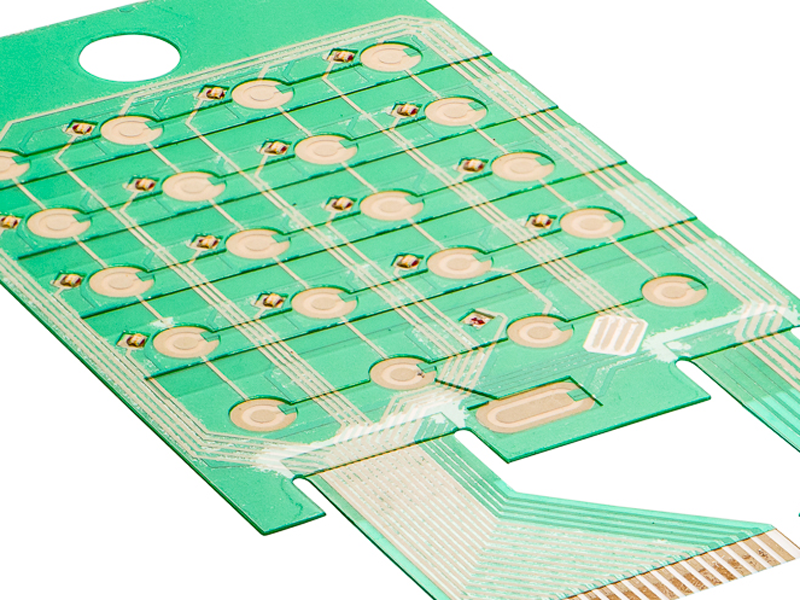Top Benefits of Using a Membrane Switch in Custom Control Panels
Top Benefits of Using a Membrane Switch in Custom Control Panels
Blog Article
Understanding Membrane Layer Switches: The Trick to Reliable and durable Controls
Membrane changes represent a crucial element of contemporary interface style, mixing capability with durability in numerous applications. These functional parts not just help with customer interaction however are also crafted to hold up against the rigors of demanding environments, from clinical gadgets to industrial machinery. Comprehending their building, procedure, and the myriad advantages they offer is essential for designers and designers alike. As we check out the details of membrane layer buttons, it comes to be clear that their role in enhancing control systems is both complex and extensive, elevating questions concerning how finest to utilize their capacities in future innovations.
What Are Membrane Layer Buttons?
Membrane layer buttons are a sophisticated service in the realm of interface technology, incorporating performance and layout seamlessly. These gadgets act as an interface between users and digital systems, incorporating several components right into a small layout. Normally built from versatile, slim layers of materials, membrane buttons are made to react to touch, allowing individuals to connect with equipment and electronic gadgets properly.
The main elements of a membrane layer switch consist of a printed circuit layer, visuals overlay, and a spacer layer that prevents unintended activation. The graphic overlay can be customized to mirror brand identity or customer choices, enhancing aesthetics while ensuring usability. Membrane layer switches are frequently used in different applications, including medical gadgets, customer electronics, and industrial tools, owing to their toughness and resistance to ecological elements such as wetness and dirt.
One of the key advantages of membrane layer buttons is their capacity to hold up against wear and tear, making them suitable for high-traffic settings. Furthermore, they are light-weight and require minimal room, permitting for ingenious designs in item advancement. Generally, membrane switches stand for a reliable and useful choice for modern digital user interfaces, marrying innovation with user-centric layout concepts.

Exactly How Membrane Switches Job
The procedure of membrane layer switches over hinges on a straightforward yet effective device that translates individual input into electronic signals. When a user presses the button, the leading layer flaws, permitting a conductive aspect in the circuit layer to make call with an equivalent conductive pad on the bottom of the visuals overlay.
The style of membrane buttons can differ, however they commonly incorporate domes or tactile components to supply comments to the user, enhancing the overall experience. The materials made use of in membrane buttons, such as polyester or polycarbonate, add to their resilience and resistance to environmental factors, including moisture and dirt. The printed circuits are commonly encapsulated, which protects them from wear and tear over time.

Advantages of Membrane Layer Buttons
Among the key benefits of membrane switches is their adaptability in design, permitting them to be personalized to satisfy particular individual needs and aesthetic needs. This adaptability reaches numerous sectors, where different forms, dimensions, and colors can be used to enhance customer interaction and like this aesthetic appeal.
In addition, membrane layer switches are understood for their sturdiness. Created from robust materials, they are immune to dust, moisture, and physical wear, which considerably expands their life-span compared to standard mechanical buttons. This longevity makes them particularly appropriate for high-traffic settings and applications needing long life.

In addition, membrane layer buttons offer a streamlined profile, causing a thinner design that can be incorporated into various devices without adding bulk. This function not just boosts the visual appeal but likewise contributes to a more ergonomic product layout.

Applications of Membrane Switches
Flexible and straightforward, membrane layer switches find applications throughout a vast array of industries, including medical tools, customer electronic devices, and commercial devices. In the clinical area, these switches are essential to devices such as analysis equipment, person tracking systems, and infusion pumps, where integrity and convenience of cleaning are essential. Their ability to endure severe settings and maintain functionality makes them suitable for such applications.
In customer electronics, membrane layer buttons are made use of in products like microwaves, cleaning machines, and remote controls - membrane switch. Their sleek layout enables for intuitive customer interfaces, improving the total individual experience while supplying toughness and resistance to tear and wear
Commercial equipment additionally profits from membrane layer switches, particularly in control panels for machinery and automation systems. These buttons provide security against dirt and wetness, ensuring constant efficiency in challenging environments. Their adjustable features permit manufacturers to customize them to specific functional needs, improving efficiency and performance.
Picking the Right Membrane Layer Change
When selecting a membrane switch, it is necessary to think about various elements that influence performance and viability for certain applications. The key factors to consider include ecological conditions, responsive feedback, longevity, and layout specs.
First, analyze the operating setting; buttons revealed to dampness, chemicals, or severe temperatures require particular materials to ensure long life and functionality. Next, review the demand for tactile responses. Depending on user communication, some applications might take advantage of a responsive reaction to verify activation, while others might choose a non-tactile design for aesthetic factors.
Sturdiness is an additional essential factor; membrane layer buttons ought to be created to withstand frequent use, impacts, and abrasion. Guarantee the chosen button can sustain the expected lifecycle, particularly in high-usage situations.
Final Thought
Finally, membrane switches function as vital components in the style of trusted and durable control systems throughout numerous go to these guys markets. Their portable style, combined with durable building and construction and personalized features, improves customer interaction while making sure long life popular atmospheres. The convenience of membrane layer switches over allows for tailored services that meet details functional requirements, enhancing their importance in modern-day innovation. membrane switch. As markets continue to evolve, the significance of incorporating efficient membrane switch services can not be overstated.
Membrane changes stand for an essential aspect of contemporary web interface design, blending functionality with resilience in various applications.Membrane layer buttons are a sophisticated remedy in the realm of customer interface technology, integrating performance and design effortlessly. Commonly constructed from flexible, thin layers of materials, membrane layer buttons are designed to react to touch, allowing individuals to communicate with machinery and electronic devices effectively.
The layout of membrane switches can differ, however they commonly integrate domes or responsive components to provide comments to the customer, enhancing the total experience.In final thought, membrane switches offer as important parts in the layout of long lasting and trustworthy control systems throughout numerous industries.
Report this page